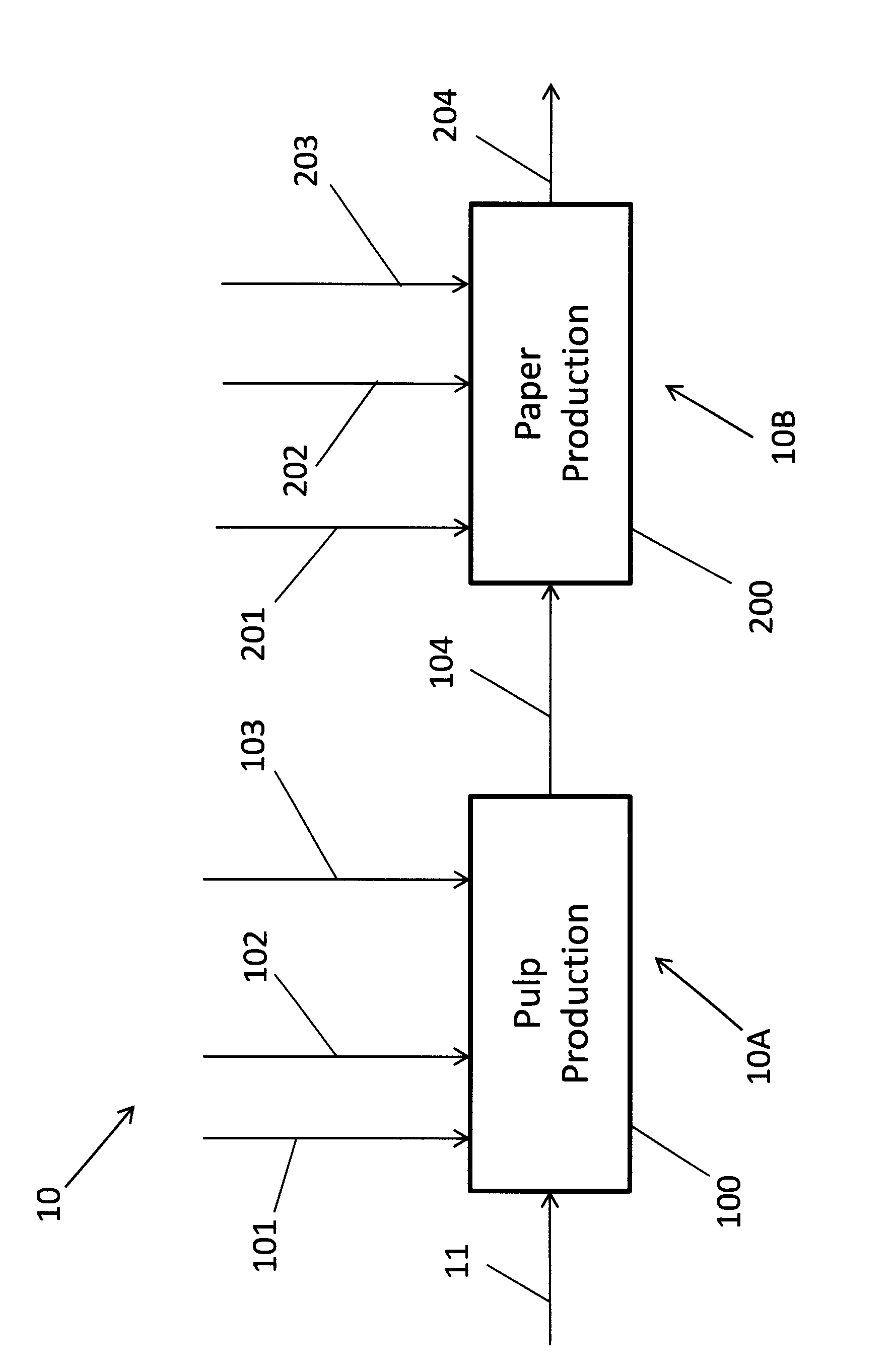Methods of using combinations of a lipase and an oxidant for pitch control in paper making processes and products thereof
a technology of oxidative and lipase, which is applied in the field of using combinations of lipase and oxidant for pitch control in paper making processes and products thereof, can solve the problems of reducing paper quality, affecting production rates, and affecting the quality of paper, so as to reduce the quality of paper
- Summary
- Abstract
- Description
- Claims
- Application Information
AI Technical Summary
Benefits of technology
Problems solved by technology
Method used
Image
Examples
example 1
[0065]Dammar resin was used as a model pitch in lab evaluation to simulate the pitch from pulp and paper processes. 75 mg Dammar resin was added in a flask containing 75 ml DI water. Lipase, oxidant, or a combination of lipase / oxidant was added to the flasks as shown in Table 1. The contents of the flasks were stirred for 5 hours at room temperature. The turbidity of the liquid in each flask was determined using a spectrophotometer at 600 nm The testing results are shown in Table 1.
[0066]
TABLE 1Turbidity (A600 nm) of Dammar resin solution after 5 hr treatmentwith lipase, oxidant, and the combination of lipase / oxidant.DosageA600 nmIncrease inTreatment(ppm)(Turbidity)A600 nmControl - Dammar resin only—0.0793—Tag Lipase6670.21630.1370ClO220.14260.0633Tag lipase + ClO2*667 + 20.38570.3064*667 ppm of Tag lipase + 2 ppm of ClO2 (as active chlorine dioxide).
[0067]Dammar resin is normally insoluble in water. As shown by the testing results in Table 1, after 5 hours stirring at room temperat...
example 2
[0068]Oleic acid is an unsaturated fatty acid. It is one of the major components of pitch deposit from pulp and paper manufacture. In this example, oleic acid was used as the substrate for evaluating the emulsification efficacy of lipase, oxidants, and combination of lipase / oxidant. 75 mg oleic acid was added in a flask containing 75 ml DI water. Lipase, oxidant, or a combination of lipase / oxidant was added to the flasks as shown in Table 2. The contents of the flasks were stirred for 5 hours at room temperature. The turbidity of the liquid in each flask was determined using a spectrophotometer at 600 nm. The testing results are shown in Table 2.
[0069]
TABLE 2Turbidity (A600 nm) of oleic acid solution after 5 hr treatmentwith lipase, oxidant, and the combination of lipase / oxidant.DosageA600 nmIncrease inTreatment(ppm)(Turbidity)A600 nmControl - Oleic acid only—0.0218—Tag Lipase6670.14090.1191ClO220.08620.0644Tag lipase + ClO2667 + 20.37290.3511Monochloroamine (MCA)20.08080.0590Tag li...
example 3
[0071]Non-ionic surfactant, PLURONIC® F108, was evaluated for its effectiveness to enhance the activity of lipase plus oxidant to emulsify oleic acid in water. PLURONIC® F108 was added to the Tag lipase formulation at 2.5, 5.0, 7.5, and 10.0% by weight. 75 mg oleic acid was added in a flask containing 75 ml DI water. 2 ppm of Cl2 was added to the flask. 2000 mg of Tag lipase formulation (Table 3) containing the PLURONIC®F108 was added to provide 677 ppm of Tag lipase. The contents of the flasks were stirred for 5 hours at room temperature. The turbidity of the liquid in each flask was determined using a spectrophotometer at 600 nm. The testing results are shown in Table 3.
[0072]
TABLE 3Turbidity (A600 nm) of oleic acid solution after 5 hrtreatment with Tag lipase formulas containing variousamounts of PLURONIC ® F108.Wt. %% A600 nmPLURONIC ®A600 nmincreaseTreatmentF108(Turbidity)vs formula-5Control -1: Oleic acid—0.0225—onlyControl-2: PLURONIC ®—0.0812—F108 onlyTag Lipase formula -12....
PUM
| Property | Measurement | Unit |
|---|---|---|
| time | aaaaa | aaaaa |
| size distributions | aaaaa | aaaaa |
| time | aaaaa | aaaaa |
Abstract
Description
Claims
Application Information
 Login to View More
Login to View More - R&D
- Intellectual Property
- Life Sciences
- Materials
- Tech Scout
- Unparalleled Data Quality
- Higher Quality Content
- 60% Fewer Hallucinations
Browse by: Latest US Patents, China's latest patents, Technical Efficacy Thesaurus, Application Domain, Technology Topic, Popular Technical Reports.
© 2025 PatSnap. All rights reserved.Legal|Privacy policy|Modern Slavery Act Transparency Statement|Sitemap|About US| Contact US: help@patsnap.com

